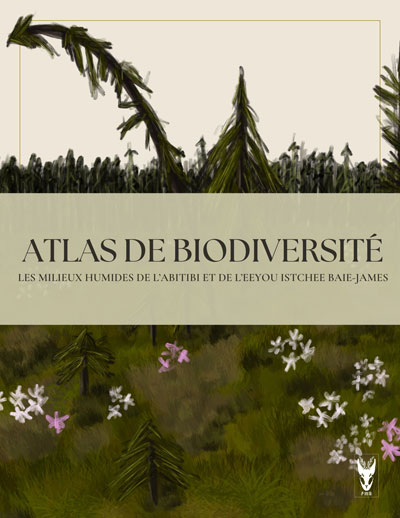(ré-aiguillé depuis Membres.BrianMcGill)

Brian J. McGill
Ancien membre régulier
Macroécologie
Université McGill
Department of Biology
Stewart Biology Building
1205 Docteur Penfield
Montreal, Quebec, Canada, H3A 1B1
(514) 398-6417
FORMATION
- Postdoctorat, 2005 (Michigan State University)
- Ph.D. en écologie et biologie évolutive, 2003 (University of Arizona)
- B.Sc. en mathématiques, 1988 (Harvard University)
BIOGRAPHIE
I am interested in problems in large scale ecology or macroecology. These problems have a large scope in one or more of the scaling dimensions: time, space, taxon. Most of my recent work has focused on either large spatial scales or large taxonomic scales. One example is exploring the causes and implications of patterns in the geographic ranges of species. Another example is exploring traditional community ecology questions such as the causes of the species abundance distribution and whether the neutral theory provides an adequate explanation. I also have interests in macroevolution/paleoecology and in evolutionary ecology. Large scale ecology is experiencing a burst of new research enabled by new technology involving large amounts of data and computer techniques for analyzing the data. This technology is collectively called "ecoinformatics" and is the central tool in much of my research.
THÈMES DE RECHERCHE
Implications of the structure of species abundance across ranges
The abundance of a species across its range has been characterized as being normal or Gaussian in shape. While this is a gross simplification, there is some real structure to abundances across a range, which I refer to as "peak-and-tail" structure. It turns out this structure combined with two other very general hypothesis can explain many well-known macroecological patterns, including the species abundance distribution (SAD) and the species area relation (SPAR). This work is done in collaboration with Cathy Collins.
Causes of structure of species abundance across its range
Given the implications of the structure of abundance across a range described above, one naturally wants to know why this structure occurs. This has been little studied to date. I propose two hypothesis:
- The center of a range functions as a source for the low abundance areas
- There is a tradeoff between climatic tolerance and diffuse competitive ability.
I implement models of these two mechanisms and show that they both produce Gaussian shaped abundances across a range
Species abundance distributions
A species abundance distribution is a histogram of the # of species in different abundance classes (1 individual observed, 2 individuals observed, etc). It is one of the most basic descriptions of the structure of a community imaginable. It is also one of ecology's truly universal laws. There are ALWAYS lots of rare species and a few hypercommon species (and some in the middle). Why is this? We don't know despite having studied this problem since the 1920's.
Testing of macroecological theories
Given that controlled, replicated experiments are very difficult and costly at the scale of macroecological questions, theory plays a very important role in macroecology. In particular the search for mechanisms depends heavily on theory.
This means that we need to be very careful about how we macroecologists test theories. In particular, I argue that fitting a curve with free parameters is a very weak test. The shape of the curve is usually predicted by the Central Limit Theorem or a similar statistical argument. I propose that there are three things which are not predicted by the central limit theorem and suggest that these make much stronger tests of macroecological theories.
Testing the unified neutral theory of biogeography (Hubbell 2001)
Applying the above argument, I examine whether the neutral theory works better than the null hypothesis of a lognormal distribution of species abundances. In fact it does not. The lognormal distribution outperforms the Zero Sum Multinomial distribution on all measures.
Interaction between biotic and abiotic factors in controlling abundance
My work on species ranges has led me to an interest in an old but poorly understand question: what converts the fundamental niche into the realized niche? By definition it is competition (or perhaps more generally all biotic interactions). Yet we know next to nothing about how this process works.
Vous pouvez télécharger toutes mes références bibliographiques en format BibTeX, BibTeX-CSV, FRQNT ou EndNote
PUBLICATIONS
Livres
Aucun
Chapitres de livre
Aucun
Livres, numéros spéciaux et actes de colloques publiés à titre d'éditeur
Aucun
Articles révisés par un comité de lecture
- Messier, J., McGill, B.J., Enquist, B.J., Lechowicz, M.J. (2017) Trait variation and integration across scales: is the leaf economic spectrum present at local scales? Ecography, 40(6):685-697
- White, P.J.T., McGill, B.J., Lechowicz, M.J. (2012) Detecting changes in forest floor habitat after canopy disturbance. Ecological Research, 27(2):397-406
- White, P.J.T., McGill, B.J., Lechowicz, M.J. (2011) Human-disturbance and caterpillars in managed forest fragments. Biodiversity and Conservation, 20(8):1745-1762
- Messier, J., McGill, B.J., Lechowicz, M.J. (2010) How do traits vary across ecological scales? A case for trait-based ecology. Ecology Letters, 13(7):838-848
- McGill, B.J. (2008) Exploring predictions of abundance from body mass using hierarchical comparative approaches. American Naturalist, 172(1):88-101
- McGill, B.J., Brown, J.S. (2007) Evolutionary game theory and adaptive dynamics of continuous traits. Annual Review of Ecology, Evolution, and Systematics, 38:403-435
- Bahn, V., McGill, B.J. (2007) Can niche-based distribution models outperform spatial interpolation? Global Ecology and Biogeography, 16(6):733-742
- McGill, B.J., Etienne, R.S., Gray, J.S., Alonso, D., Anderson, M.J., Benecha, H.K., Dornelas, M., Enquist, B.J., Green, J.L., He, F.L. et al. (2007) Species abundance distributions: moving beyond single prediction theories to integration within an ecological framework. Ecology Letters, 10(10):995-1015
- McGill, B.J., Enquist, B.J., Weiher, E., Westoby, M. (2006) Response to Kearney and Porter: Both functional and community ecologists need to do more for each other. Trends in Ecology and Evolution, 21(9):482-483
- McGill, B.J., Enquist, B.J., Weiher, E., Westoby, M. (2006) Rebuilding community ecology from functional traits. Trends in Ecology and Evolution, 21(4):178-185
- McGill, B.J. (2006) A renaissance in the study of abundance. Science, 314(5800):770-772
- McGill, B.J., Mittelbach, G.G. (2006) An allometric vision and motion model to predict prey encounter rates. Evolutionary Ecology Research, 8(4):691-701
- McGill, B.J., Maurer, B.A., Weiser, M.D. (2006) Empirical evaluation of neutral theory. Ecology, 87(6):1411-1423
- Gotelli, N.J., McGill, B.J. (2006) Null versus neutral models: what's the difference? Ecography, 29(5):793-800
- McGill, B.J., Hadly, E.A., Maurer, B.A. (2005) Community inertia of quaternary small mammal assemblages in North America. Proceedings of the National Academy of Sciences of the United States of America, 102(46):16701-16706
- Maurer, B.A., McGill, B.J. (2004) Neutral and non-neutral macroecology. Basic and Applied Ecology, 5(5):413-422
- McGill, B.J. (2003) A test of the unified neutral theory of biodiversity. Nature, 422(6934):881-885
- McGill, B.J. (2003) Does Mother Nature really prefer rare species or are log-left-skewed SADs a sampling artefact? Ecology Letters, 6(8):766-773
Articles publiés dans des actes de colloque (proceedings)
Aucun
Rapports scientifiques, manuels et autres
Aucun
Thèses, mémoires et essais
Aucun
Thèses, mémoires et essais supervisés
Aucun
Articles non révisés par un comité de lecture
Aucun
<< | MembresReguliers | >>










